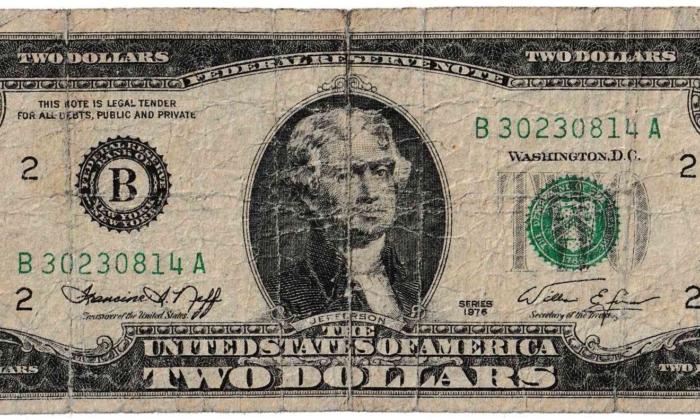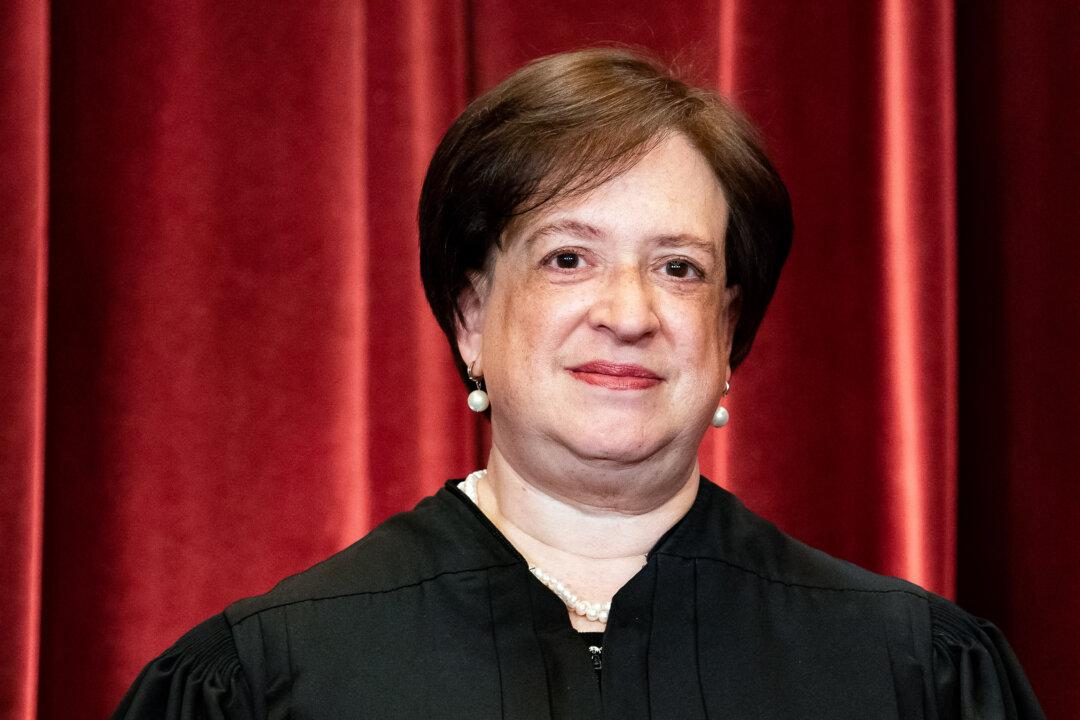A $2 bill you have lying around could be worth hundreds—or even thousands—of times more than its face value.
The U.S. Currency Auctions’ Pricing guide shows that a $2 bill, which features the third U.S. president, Thomas Jefferson, could be worth up to $4,500, depending on certain factors. Compared with other bills, the $2 currency is considered more rare, although they’re still being produced.
“Americans don’t spend $2 bills, because they think they are markedly scarce. However, the numbers tell us a different story,” Dustin Johnston, vice president of Heritage Auctions, told MarketWatch on Wednesday, noting that some bills could be worth up to $20,000 at auction.
The auction official issued a caveat: “Just in the last five years, they’ve printed 100 million $2 bills. The fact that they don’t circulate and are kept as mementos is a little bit odd. Very few of them have numismatic or collector value.”
And Art Pinto, the manager of Legacy Coins and Curiosities in Florida, told Fox 13 that there are several contributing factors that help determine the potential value of a $2 bill. He noted that newer bills have a green seal on them and are likely just worth their face value, but if the bill includes a red seal, it likely is worth more.
“If you’re looking for a high dollar $2 bill, it would be pre-1900, and it would have to be in a very high-graded condition,” said Mr. Pinto.
Mr. Johnston told MarketWatch that other than the date, people look for serial numbers and the condition of the bill.
“What we look at is fancy serial numbers,” he said. “A serial number ‘1’ for a 1976 $2 bill would be worth $20,000 or more. But a majority of those people holding 1976 $2 bills, they are only worth face value. There are very few that actually exceed face value.”
He added that “beyond the fancy serial numbers, most of the value is going to be in the large size notes [from] 1918 and prior,” adding that 1918 bills “are very common.”
“They typically start at $80 to $100 and go up from there,” Mr. Johnston added. “The more recent ones, the 1920s and beyond, well over 99 percent are going to be worth marginally over face value.”
According to Heritage Auctions, a $2 currency note that was minted in 2003 sold online for $2,400 in July 2022. The same bill sold for $4,000 at a separate auction later that year.
A $2 bill known as a “Rainbow Note,” dating back to 1869, is expected to sell for at least $12,000, says a listing on the auction company’s website. One of those same notes is also currently listed on eBay for $7,990.
The $2 bill has been in U.S. circulation since 1862, and six different types have been created since then, according to the Department of Treasury’s website. But the currency been mostly unpopular over its history.
“For most of their history, $2 notes have been unpopular, being viewed as unlucky or simply awkward to use in cash exchanges,” the Bureau of Engraving and Printing says, which added that President Jefferson did not start appearing on the bill’s face until 1869. Before that, first U.S. Treasury Secretary Alexander Hamilton appeared on the currency.
As of 2017, there were about 1.2 billion $2 bills in circulation, according to the U.S. Currency Education Program.
However, Mr. Johnston said that holding onto most recently made $2 bills likely won’t pan out. “Holding onto the common ones for another 30 years, they are common now, they are going to probably stay common,” he told MarketWatch. “You’re almost better off spending them now, or depositing them in the bank vs. holding onto them.”
Several years ago, a extremely rare $1,000 bill sold for $1.2 million at an auction. The 1891 bill features the face of William L. Marcy, who served as the governor of New York and was a secretary under President James K. Polk in the mid-nineteenth century.
The most expensive U.S. coin that was ever auctioned is the 1933 Double Eagle gold coin, which was sold for $18 million in 2021.







